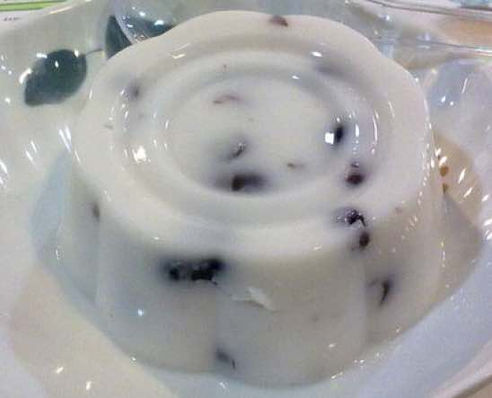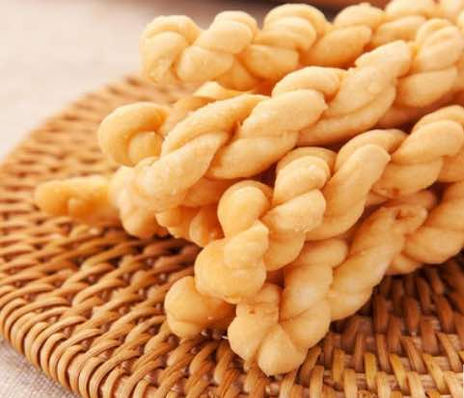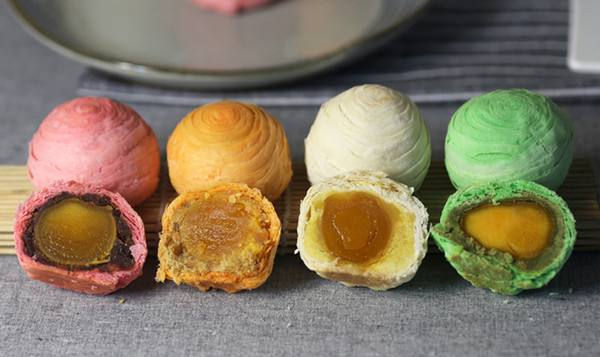Chinese Desserts in Food Culture
Chinese desserts form a realm of flavors, textures, and time-honored culinary traditions.
They exhibit less standardization, featuring fewer milky and sugary flavors, both historically and traditionally.
From the delicate sweetness of iconic treats like mooncakes to the comforting warmth of sweet soups and the intricate artistry of traditional pastries, Chinese desserts present an artful balance of taste and beauty.

Bean Cakes (Dou Gao), Picture from Lingchuan Meishi.
History of Chinese Desserts
The consumption of maltose, honey, and ice has been documented in the Classic of Poetry (or Book of Songs), which contains poems from the Zhou Dynasty (1046 BC — 771 BC) and the Spring and Autumn Period (770 BC — 476 BC).
This is the earliest written record of using sugar to make sweet-tasting desserts.

Bronze Container (Jian) that Could Place Ice Cubes to Cool Wine and Food, Unearthed from Tomb of Marquis Yi of Zeng (about 475 BC — 433 BC) — National Museum of China
But dessert had been only popular among royals.
Until the Tang Dynasty (618 — 907) and Song Dynasty (960 — 1279), sugar production dramatically increased due to the development of technology and the economy.
Since then, desserts have become a part of civilian life, with more ingredients added and new types invented.

Unearthed Food (Dumplings and Desserts) and Utensils from the Tang Dynasty — National Museum of China (Photo by Kanjianji)
Characteristics of Chinese Dessert
-
Not standardized.
Most of the typical Chinese desserts have public recipes, but because of complicated ingredients and cooking methods, they are still neither standardized nor industrialized. Therefore, a dessert would not taste the same in different places and shops.
-
Less milky and sugary.
-
Stuffing varied geographically. Depending on geographical differences, one type of dessert may have many different stuffings.
For example, the stuffings of Mooncake for the Mid Autumn Festival varied from sugar, nuts, and fruits, to egg yolk and meat.
-
Some Chinese desserts, especially those made of flour and rice, could be served as staple foods.
-
Sweet-flavored soups and pastes are also considered desserts.

Cooking Methods for Traditional Chinese Desserts
Historically, the art of crafting traditional Chinese desserts has embraced a diverse array of cooking methods, including but not limited to steaming, baking, roasting, boiling, and frying.
Main Ingredients for Making Traditional Chinese Desserts
A myriad of ingredients forms the foundation of traditional Chinese desserts, showcasing the culinary versatility of the cuisine.
Key elements include rice, flour, fragrant flowers, beans, fresh fruits, milk, crisp vegetables, succulent meats, eggs, sweet sugar, rich oils, and refreshing ice.
This diverse palette of ingredients allows for the creation of a wide spectrum of delectable desserts, each offering a unique blend of flavors, textures, and cultural significance.

Classifications and List of Famous Traditional Chinese Desserts
The realm of traditional Chinese desserts is diverse, with various types rooted in the amalgamation of key ingredients and distinctive cooking methods.
Flower Shaped Su (or Crisp)
Glutinous Rice Made Pastry
Cakes Using Flowers As Main Ingredients
Cakes Using Beans As Main Ingredients
Cakes Using Nuts As Main Ingredients
Fruit and Vegetable Cakes
Meat Pastries
Fried Pastries
Paste and Soup
Other Popular Traditional Chinese Desserts
You Might Also Like:
Diverse and Traditional Chinese Drinks
Origin, Classification, and Culture of Chinese Tea
Chinese Food Culture — Fun Facts, History, Development, and Etiquette
Chinese Dishes — History, Development, Culture, Names, and Facts
Chinese Cuisines — Origin, Classification, Tradition, Culture, and Fact
Shandong/Lu Cuisine — Representative of Northern Chinese Food Culture
Jiangsu/Su Cuisine — Sweet, Fresh Series of the Royals
Anhui/Hui Cuisine — Natural, Tasty Series that Disseminated by Diligent Merchants
Fujian/Min Cuisine — Series of Multi-ethnic, Fresh Seafood and Regional Vegetables
Zhejiang/Zhe Cuisine — Delicate Series with Close Connections to History & Culture
Sichuan/Chuan Cuisine — Popular, Spicy Series with Affluent Flavors
Cantonese/Yue Cuisine — Exquisite Series that Preserves the Primary Flavor
Hunan/Xiang Cuisine — Spicy, Sour Series For People Living in Moist Climate
Chinese Alcohol Culture and Toasting Etiquette
Daily Etiquette and Table Manners in the Tradition of China



































































